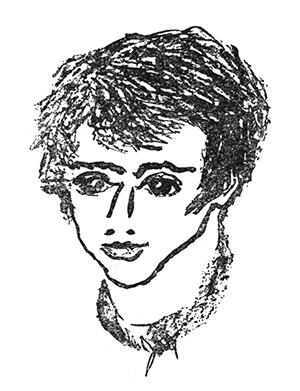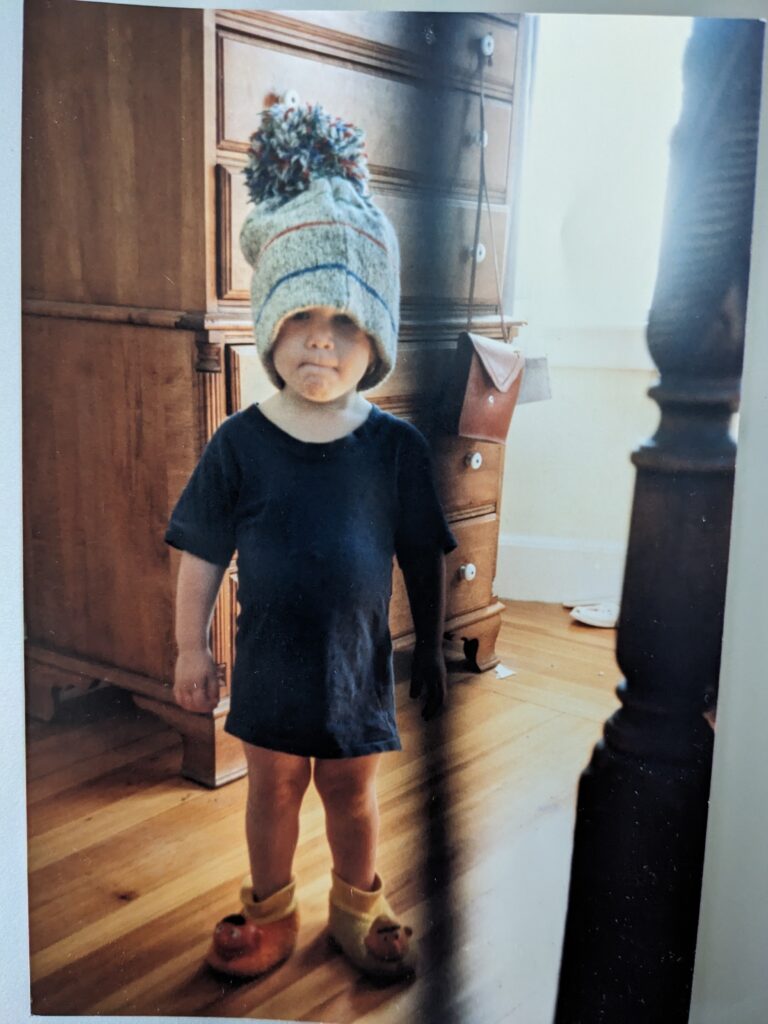Issue 14, Autumn 1956

Sketch by Ivy Nicholson, 1956.
Françoise Sagan now lives in a small and modern ground-floor apartment of her own on the Rue de Grenelle, where she is busily writing a film script and some song lyrics as well as a new novel. But when she was interviewed early last spring just before the publication of Un Certain sourire, she lived across the city in her parents’ apartment on the Boulevard Malesherbes in a neighborhood that is a stronghold of the well-to-do French bourgeoisie. She met the interviewer in the comfortably furnished living room, seated them in large chairs drawn up to a marble fireplace, and offered them scotch from a pint bottle which was unquestionably, somehow, her own contribution to the larder. Her manner is shy, but casual and friendly, and her gamine face crinkles easily into an attractive, rather secret smile. She wore a simple black sweater and gray skirt; if she is a vain girl the only indication of it was her high-heeled shoes, which were of elegantly worked light gray leather. She speaks in a high-pitched but quiet voice and she clearly does not enjoy being interviewed or asked to articulate in a formal way what are, to her, natural assumptions about her writing. She is sincere and helpful, but questions that are pompous or elaborate, or about personal life, or that might be interpreted as challenging her work, are liable to elicit only a simple “oui” or “non,” or “je ne sais pas—je ne sais pas du tout”—and then an amused, disconcerting smile.
INTERVIEWER
How did you come to start Bonjour tristesse when you were eighteen? Did you expect it would be published?
FRANÇOISE SAGAN
I simply started it. I had a strong desire to write and some free time. I said to myself, This is the sort of enterprise very, very few girls of my age devote themselves to; I’ll never be able to finish it. I wasn’t thinking about “literature” and literary problems, but about myself and whether I had the necessary willpower.
INTERVIEWER
Did you let it drop and then take it up again?
SAGAN
No, I wanted passionately to finish it—I’ve never wanted anything so much. While I was writing I thought there might be a chance of its being published. Finally, when it was done, I thought it was hopeless. I was surprised by the book and by myself.
INTERVIEWER
Had you wanted to write for a long time before?
SAGAN
Yes. I had read a lot of stories. It seemed to me impossible not to want to write one. Instead of leaving for Chile with a band of gangsters, one stays in Paris and writes a novel. That seems to me the great adventure.
INTERVIEWER
How quickly did it go? Had you thought out the story in advance?
SAGAN
For Bonjour tristesse all I started with was the idea of a character, the girl, but nothing really came of it until my pen was in hand. I have to start to write to have ideas. I wrote Bonjour tristesse in two or three months, working two or three hours a day. Un Certain sourire was different. I made a number of little notes and then thought about the book for two years. When I started in writing, again two hours a day, it went very fast. When you make a decision to write according to a set schedule and really stick to it, you find yourself writing very fast. At least I do.
INTERVIEWER
Do you spend much time revising the style?
SAGAN
Very little.
INTERVIEWER
Then the work on the two novels didn’t take more than five or six months in all?
SAGAN
Yes, it’s a good way to make a living.
INTERVIEWER
You say the important thing at the start is a character?
SAGAN
A character, or a few characters, and perhaps an idea for a few of the scenes up to the middle of the book, but it all changes in the writing. For me writing is a question of finding a certain rhythm. I compare it to the rhythms of jazz. Much of the time life is a sort of rhythmic progression of three characters. If one tells oneself that life is like that, one feels it less arbitrary.
INTERVIEWER
Do you draw on the people you know for your characters?
SAGAN
I’ve tried very hard and I’ve never found any resemblance between the people I know and the people in my novels. I don’t search for exactitude in portraying people. I try to give to imaginary people a kind of veracity. It would bore me to death to put into my novels the people I know. It seems to me that there are two kinds of trickery: the “fronts” people assume before one another’s eyes, and the “front” a writer puts on the face of reality.
INTERVIEWER
Then you think it is a form of cheating to take directly from reality?
SAGAN
Certainly. Art must take reality by surprise. It takes those moments which are for us merely a moment, plus a moment, plus another moment, and arbitrarily transforms them into a special series of moments held together by a major emotion. Art should not, it seems to me, pose the “real” as a preoccupation. Nothing is more unreal than certain so-called “realist” novels—they’re nightmares. It is possible to achieve in a novel a certain sensory truth—the true feeling of a character—that is all.
Of course the illusion of art is to make one believe that great literature is very close to life, but exactly the opposite is true. Life is amorphous, literature is formal.
INTERVIEWER
There are certain activities in life with highly developed forms, for instance, horse racing. Are the jockeys less real because of that?
SAGAN
People possessed by strong passions for their activities, as jockeys may seem to be, don’t give me the impression of being very real. They often seem like characters in novels, but without novels, like The Flying Dutchman.
INTERVIEWER
Do your characters stay in your mind after the book is finished? What kind of judgments do you make about them?
SAGAN
When the book is finished I immediately lose interest in the characters. And I never make moral judgments. All I would say is that a person was droll, or gay, or, above all, a bore. Making judgments for or against my characters bores me enormously; it doesn’t interest me at all. The only morality for a novelist is the morality of his esthétique. I write the books, they come to an end, and that’s all that concerns me.



